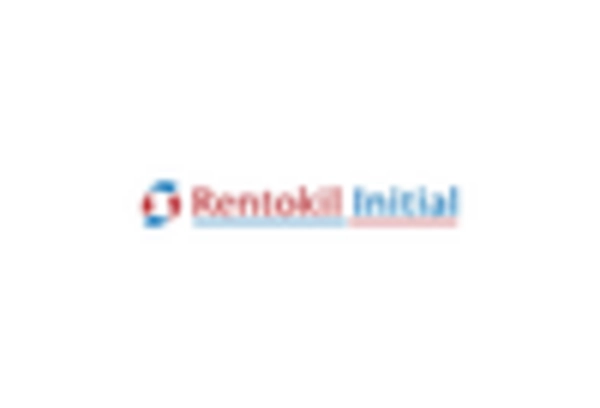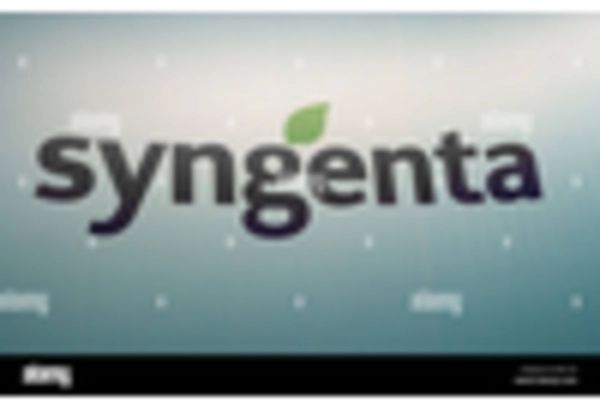Rising Awareness of Pest Control
The Phosphine Fumigation Market is benefiting from a heightened awareness of pest control among consumers and businesses alike. As awareness of the detrimental effects of pests on food quality and safety grows, the demand for effective fumigation solutions increases. Phosphine fumigation is particularly valued for its ability to eliminate a wide range of pests, including insects and rodents, without leaving harmful residues. This method is increasingly preferred in warehouses and storage facilities, where maintaining the integrity of stored products is crucial. In recent years, the market has seen a notable increase in adoption rates, with estimates suggesting that the use of phosphine fumigation has risen by approximately 15% in key agricultural regions. This trend indicates a shift towards more proactive pest management strategies, further solidifying the role of phosphine fumigation in the market.
Increasing Agricultural Production
The Phosphine Fumigation Market is experiencing a surge in demand due to the increasing need for agricultural production. As the global population continues to rise, the pressure on food supply chains intensifies. Phosphine fumigation is recognized for its efficacy in protecting stored grains and other agricultural products from pests, thereby ensuring food security. In 2023, the market for phosphine fumigation was valued at approximately USD 1.2 billion, with projections indicating a compound annual growth rate of around 5% through 2030. This growth is largely driven by the agricultural sector's reliance on effective pest control measures to maintain crop yields and quality. Consequently, the Phosphine Fumigation Market is poised for expansion as farmers and agribusinesses increasingly adopt this method to safeguard their produce.
Regulatory Support for Fumigation Practices
The Phosphine Fumigation Market is influenced by regulatory frameworks that support the use of phosphine as a fumigant. Various agricultural and environmental agencies have established guidelines that promote safe and effective fumigation practices. These regulations often encourage the adoption of phosphine fumigation due to its proven efficacy and relatively low environmental impact compared to other chemical alternatives. In many regions, compliance with these regulations is becoming a prerequisite for pest control operations, thereby driving demand for phosphine fumigation services. As regulatory bodies continue to emphasize the importance of food safety and pest management, the Phosphine Fumigation Market is likely to see sustained growth, as businesses seek to align with these standards.
Expansion of Global Trade and Export Markets
The Phosphine Fumigation Market is significantly impacted by the expansion of global trade and export markets. As countries engage in international trade, the need for effective pest control measures becomes paramount to meet the stringent quality standards imposed by importing nations. Phosphine fumigation is often employed to ensure that agricultural products are free from pests and diseases, thereby facilitating smoother trade transactions. In 2023, it was estimated that approximately 30% of the phosphine fumigation market was driven by export-related activities. This trend is expected to continue, as more countries recognize the importance of maintaining pest-free products for export. Consequently, the Phosphine Fumigation Market is likely to benefit from the increasing interconnectedness of global supply chains.
Technological Advancements in Fumigation Techniques
The Phosphine Fumigation Market is witnessing significant advancements in fumigation technologies, which are enhancing the effectiveness and safety of phosphine applications. Innovations such as improved delivery systems and monitoring technologies are being developed to optimize the fumigation process. These advancements not only increase the efficiency of pest control but also reduce the risks associated with phosphine exposure for workers and the environment. For instance, the introduction of automated fumigation systems has streamlined operations in storage facilities, leading to a more controlled and effective application of phosphine. As these technologies continue to evolve, they are likely to attract more users to the Phosphine Fumigation Market, potentially increasing market share and driving growth in the coming years.


















Leave a Comment